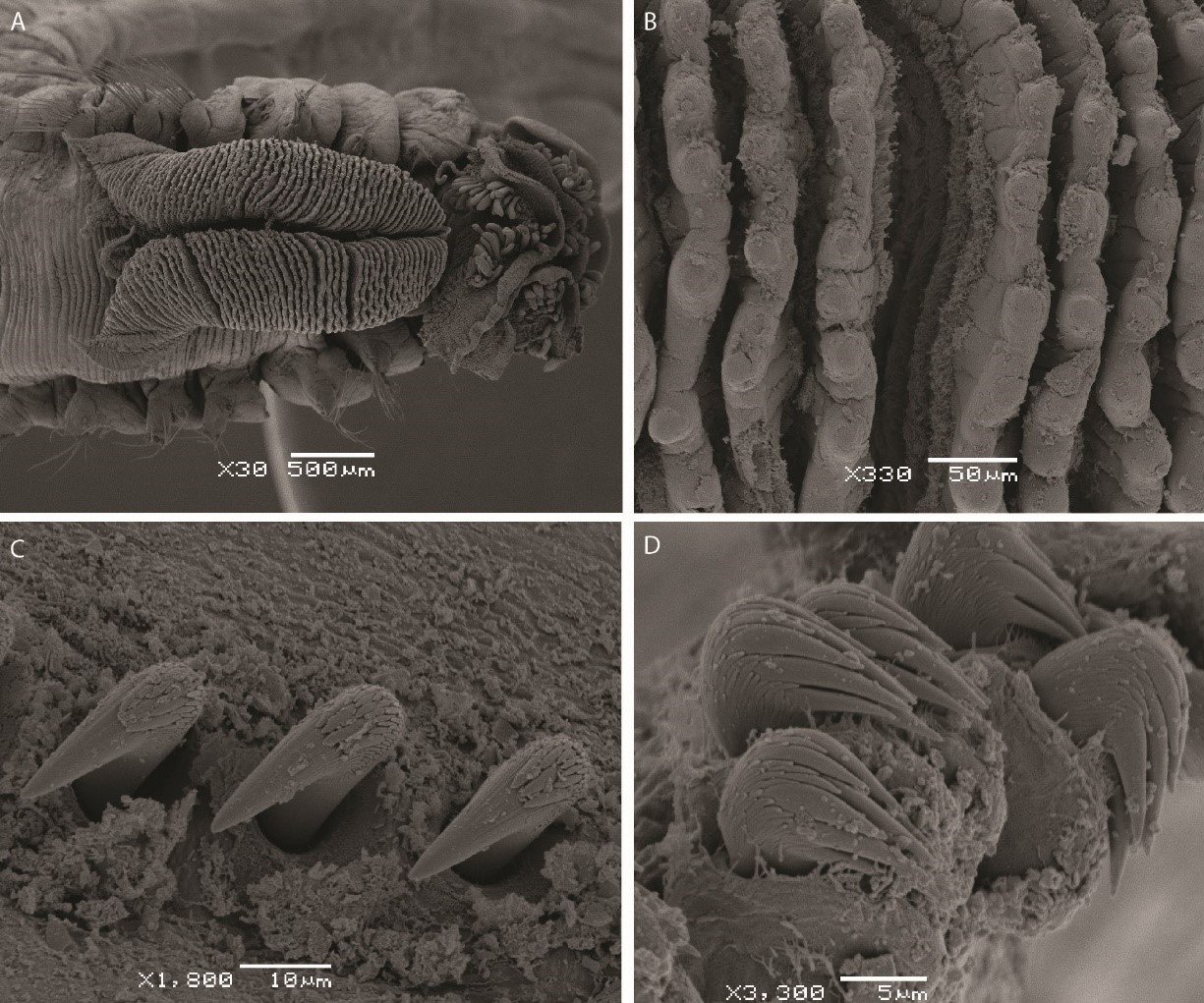The spaghetti project in France: rewriting a classical polychaete tome
Read how a spaghetti project, named after the buccal tentacles of the seaworm, has led to the description of nine new species of Trichobranchids. Pat Hutchings and Nicolas Lavesque discuss their findings and how this is rewriting the classical polychaete (seaworm) story.
If you want to identify a polychaete (seaworm) in Europe, you almost automatically turn to the two volumes of Fauna de France by the priest Pierre Fauvel (1923, 1927) and check out the keys and figures to identify your animal. However, what is worrying is that these volumes are also used in other parts of the world to identify seaworms. This means that European species have often been recorded in distant places to where they were originally described.
The illustrations and descriptions given by Fauvel reflect the techniques available at the time. Fauvel had no reservations in listing wide distributions – in addition, his drawings are rather schematic and are likely an amalgamation of several specimens. Examining his collections in the Museum National d’Histoire Naturelle in Paris, it is almost impossible to identify which specimens he actually described or illustrated.

Fauvel (1927) illustrations of Trichobranchidae from France
Image: Fauvel (1927)© Fauvel (1927)
Over three years ago, I ran a polychaete course at Caen, Normandy in France funded by Centre national de la recherche scientifique (CNRS). The course concentrated on the terebellids, one of the larger groups of polychaetes. During the course, the concept was raised that much of the French polychaete fauna still remain to be described. One of the participants, Nicolas Lavesque, took this message to heart and began collecting terebellids around his home base at Arcachon. Then, he initiated the “spaghetti project” (in reference to their abundant buccal tentacles). This project involves collaborators based at all French marine stations, where they collect terebellids and ship them to Arcachon, where Nicolas is employed by CNRS as Research Engineer.

Note the abundant buccal tentacles. Terebellides lilasae from France (Lavesque, N., Hutchings, P., Dafffe G., Nygren, A., Londono-Mesa, M. 2019. A revision of the French Trichobranchidae (Polychaeta), with descriptions of nine new species. Zootaxa 4664(2): 151-190.). Reproduced with permission from copyright holder.
Image: © Magnolia Press© © Magnolia Press
As this project developed, Nicolas decided to undertake a PhD and invited me to be one of this supervisors, in order to revise the French terebellid fauna. This project is currently underway, and to finalise Nicolas’ project, he has received financial support from the French State in the frame of the “Investments for the future” Programme IdEx Bordeaux to stay nine months at the Australian Museum.
The “spaghetti project” has rapidly developed and has led to the description of nine new species of Trichobranchids (one of the families within the project), a discovery that we published earlier this year with collaborations between Australian, French, Swedish and Columbian researchers. Previously, only one species of this family had been recorded from France and now we know it does not occur in French waters. Rather this species, Terebellides stroemi, is restricted to a small area off the Norwegian coast. As such, this paper highlights the unknown diversity of Trichobranchids in shallow water off the coast of France, and we are sure more will be found once deeper waters are sampled.
Collaborating with another French colleague, we have also recently published a new species of Pista which increases the number of recorded species from France to five. However, further work on this genus is needed, as some of these species may have been misidentified or represent suites of species.

An example of the images from the project. SEM images of Terebellides lilasae (Lavesque, N., Hutchings, P., Dafffe G., Nygren, A., Londono-Mesa, M. 2019. A revision of the French Trichobranchidae (Polychaeta), with descriptions of nine new species. Zootaxa 4664(2): 151-190). Reproduced with permission from copyright holder.
Image: © Magnolia Press© © Magnolia Press
This project, which we hope to finalise in 2020, will not only increase the number of species known within this group of seaworms, but also provide comprehensive descriptions of each species including scanning electron microscope images and molecular data. This study is important for facilitating the identification of the European terebellids and clarify their distributions within the region. In addition, it will hopefully highlight the problems of using European literature in areas outside of Europe. Although we may find seaworms from the genus in other parts of the world, species tend to have restricted distributions. That is, unless they have been accidently transported by the aquaculture industry, by ballast water or full fouling translocations.
Many of the species listed by Fauvel, as being present in France, are the type species of the genus and therefore it is critical to resolve their true identity in order to stabilize the genera.
References:
Labrune C., Lavesque, N., Bonifacio, P., & Hutchings, P. 2019. A new species of Pista Malmgren, 1866 (Polychaeta, Terebellidae) from the Western Mediterranean Sea. Zookeys. 838:71–83.
Lavesque, N., Hutchings, P., Dafffe G., Nygren, A., Londono-Mesa, M. 2019. A revision of the French Trichobranchidae (Polychaeta), with descriptions of nine new species. Zootaxa 4664(2): 151-190.
Pat Hutchings, Senior Fellow, Australian Museum Research Institute
Nicolas Lavesque, Research Engineer at CNRS, Arcachon, France




![[Image of Thelepus japonicus]](https://media.australian.museum/media/dd/images/Fig3_Thelepus_japonicus.87ecdb0.2e16d0ba.fill-600x400.f1c68b5.jpg)






